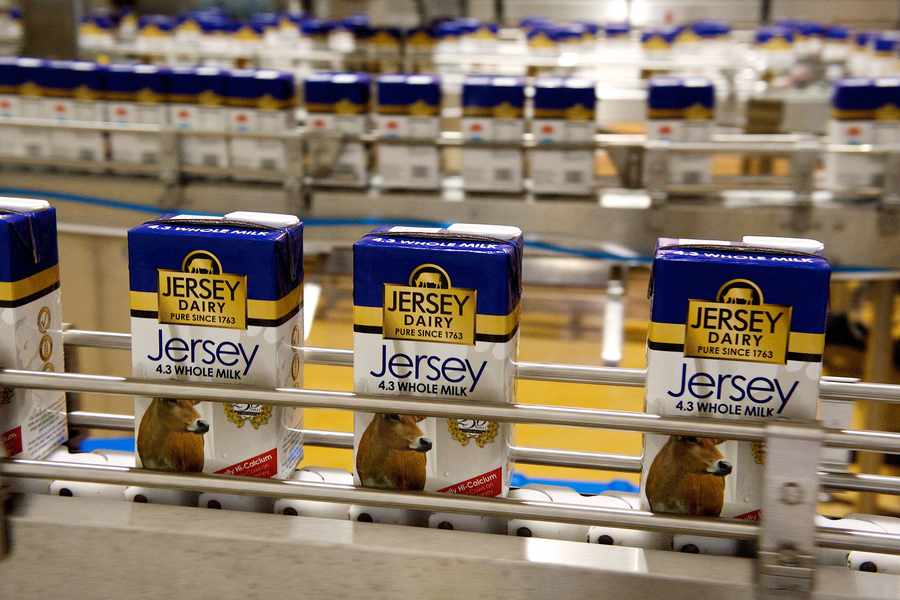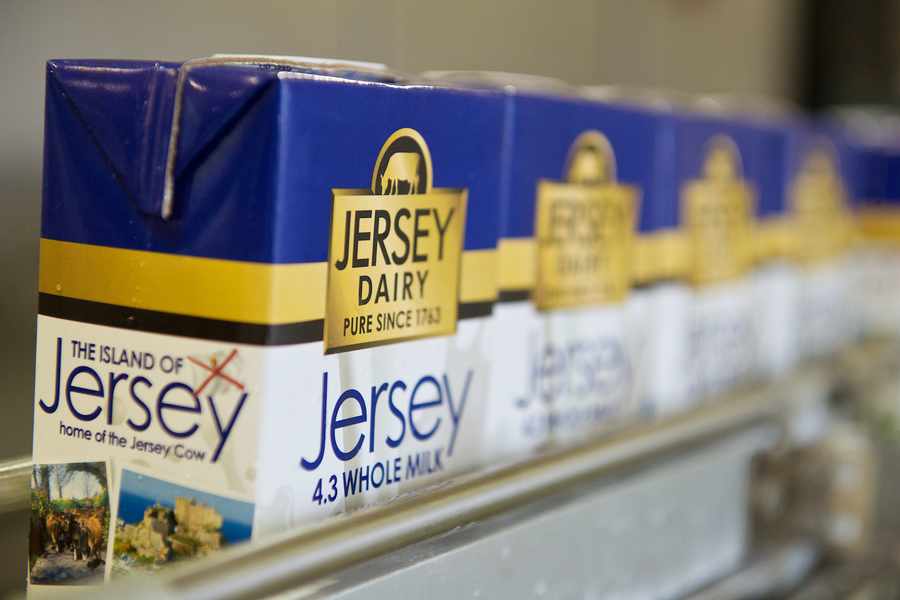
- UHT milk is pasteurised at 140 °C, as opposed to the 60 °C of fresh milk.
- The ultra-high temperatures ensure that spores are killed in the milk and that it has an increased shelf life of approximately nine months ?
- It was invented in the 1960s ?
- UHT milk is especially popular in France, Belgium, Portugal and Spain[/breakout]
Deputy Montfort Tadier raised concerns that there is a mismatch between the Island’s long-term environment strategy, which aims to slash carbon emissions over the next 35 years, and commercial projects such as the shipping of dairy products to far corners of the globe.
During question time in the States on Tuesday, Environment Minister Steve Luce told Deputy Tadier that while there may be a ‘perceived tension’ between Jersey produce being flown around the world and lowering carbon emissions, Jersey Dairy was a hugely important part of Island life.
Deputy Luce said: ‘Jersey Dairy has been looking for a niche export to allow them to return to profitability.
‘I think this has been one of the outstanding pieces of entrepreneurship in the last few years.’
However, following the answer Deputy Tadier said that Deputy Luce sounded more like the Economic Development Minister than the Environment Minister.
Deputy Luce, whose answer led to much foot stamping from the Chamber, replied: ‘As I’m finding in this job it is a matter of balancing one side against another.
‘If the Deputy is suggesting that I should somehow ban the export of Jersey Dairy products to the Far East because it doesn’t comply with our energy policy, I would have to say that in balancing the two a small amount of carbon being bought and burned exporting what is quite a small amount of a niche product to the other side of the world pales into insignificance compared to what would happen to our countryside if dairy farming ceased to exist in the Island.
‘The loss of the green and pleasant land that we all enjoy would not only have an impact on people living in the Island but it would impact on tourism and other people who want to come and live here. I just can’t and wouldn’t be able to contemplate a Jersey without green and pleasant fields with brown Jersey cows grazing in them.’
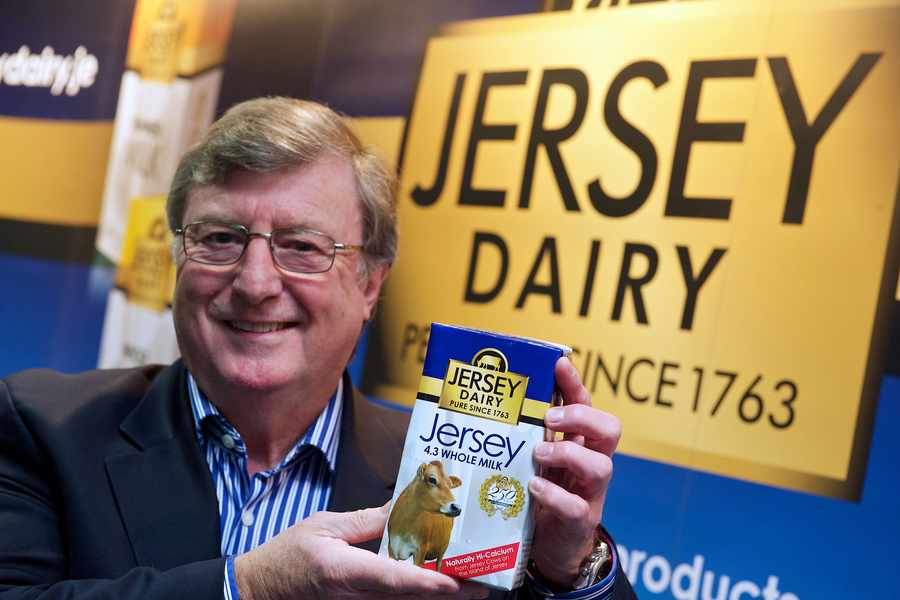
In 2013, Jersey Dairy began exporting milk to the world’s most populous country after signing a five-year contract with a Hong Kong distributor.
It means that 23,000 litres of ultra-high treatment (UHT) milk are shipped across the world to China on a monthly basis.
Bob Jones, marketing consultant to Jersey Dairy, explained that it was the nutritional value of the Jersey milk that first attracted the attention from overseas.
‘China has had problems with the contamination of their own dairy products and when they learnt that Jersey milk was strong in protein and calcium, they were very interested.’
He says that the growth of China’s middle class and their increased affluence has increased the demand for quality food produce.
‘We are using Hong Kong as a test market for our sales to mainland China,’ Mr Jones said.
With the exports to China, Mr Jones says that approximately 20% of milk produced in Jersey leaves the Island.
And although there will be much larger focus on exports, Mr Jones says that Jersey Dairy’s main priority is always to ensure the sustainability of the milk supply on island.
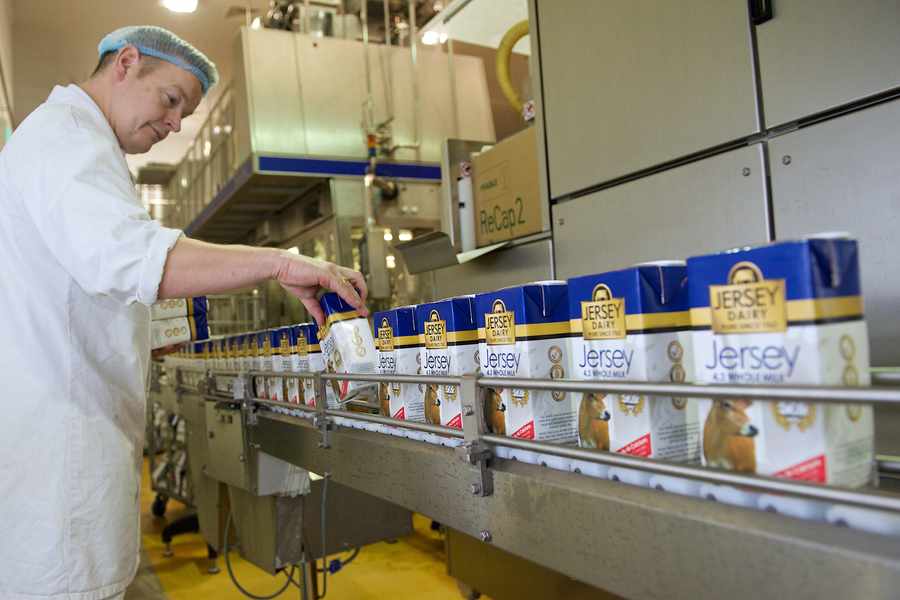
‘We are producing more milk than we are able to sell and these ventures create a way to make the production more viable for farmers.’
Since the building of the new state of the art dairy facilities in 2010, UHT has been a large part of the production line and has allowed greater exports to the UK and Spain, the latter which has the largest UHT market in Europe.
Mr Jones says there will be a steady increase in milk production and that he aims to reach a 30% increase in milk distribution by 2020, concentrating on China, the UK and Spain.
The sale of milk to China has also afforded new possibilities for marketing the Island as a destination for the country with the largest number of tourists in the world.
Cartons of the milk feature pictures of Mont Orgueil Castle, Corbière Lighthouse and a green Jersey field, as well as a QR code that links to information from Jersey Tourism.
‘When I visited Hong Kong, there was one street that had 100,000 people living in it. With these photographs we can show how different Jersey’s environment is and look to increase the interest in the Island.’
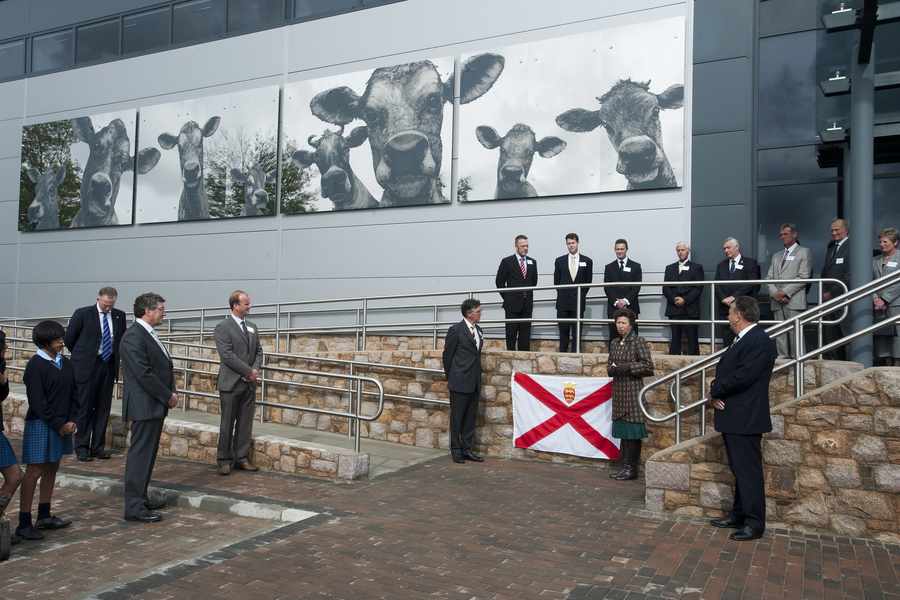
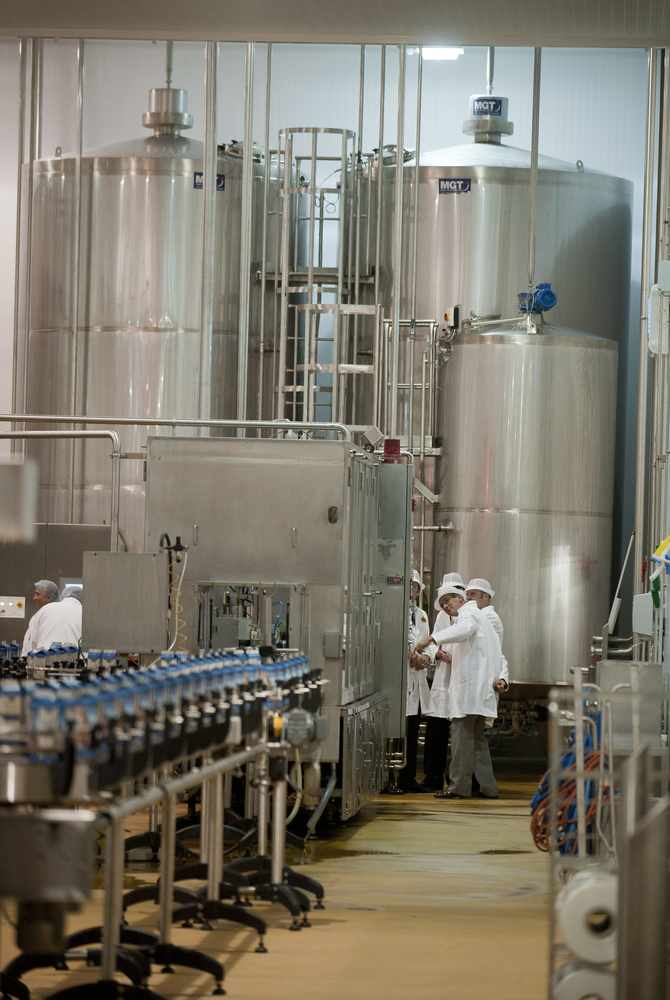
It took Jersey Dairy six years to organise their relocation from Five Oaks to Howard Davis Farm in Trinity in 2010.
The new multi-million factory was the most significant step in 50 years towards securing their future in the Island.
Funded by the sale of their tired Five Oaks site to Dandara for £12 million, the dairy was expected to breathe life into an industry that had been reliant in recent years on an older generation of farmers.
The new dairy is next door to the Royal Jersey Agricultural and Horticultural Society, making a quiet area of Trinity the unofficial heart of agriculture in Jersey.
Though it is a large site at 3,000 square metres, the new dairy is smaller than Five Oaks, managing to be more efficient because of its layout.
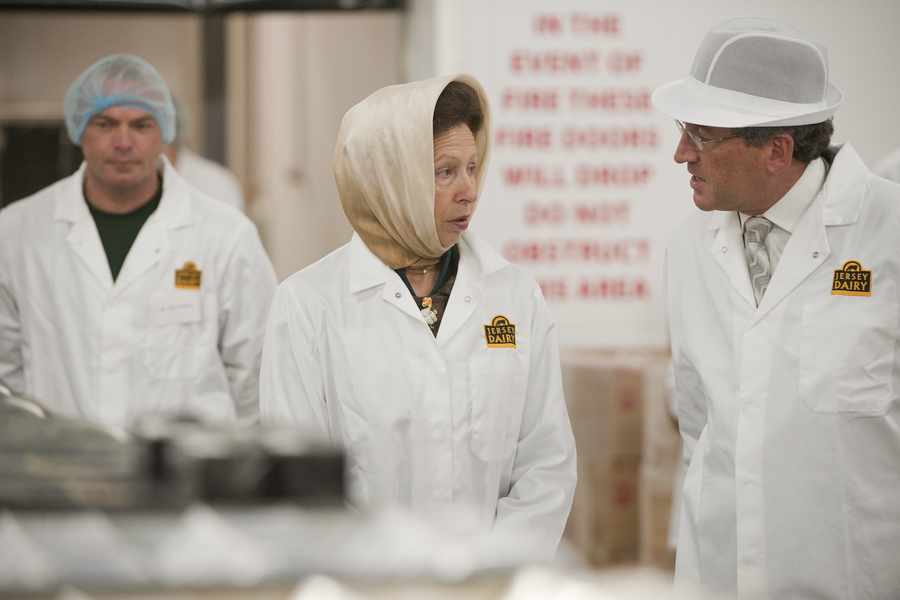
DAIRY FACTS:
- The amount of cement used in the construction of the new dairy could fill one and half Olympic-size swimming pools
- The fridge at the new dairy can hold 100,000 litres of milk
- The freezer at the new dairy can hold 100,000 litres of ice cream
- The new site covers 13, 246 square metres
- Jersey milk has 18 percent more protein, 20 percent more calcium, 25 percent more butterfat and a higher concentration of minerals and vitamins than that from other breeds
- It takes 15 litres of milk to make a kilo of Jersey butter


